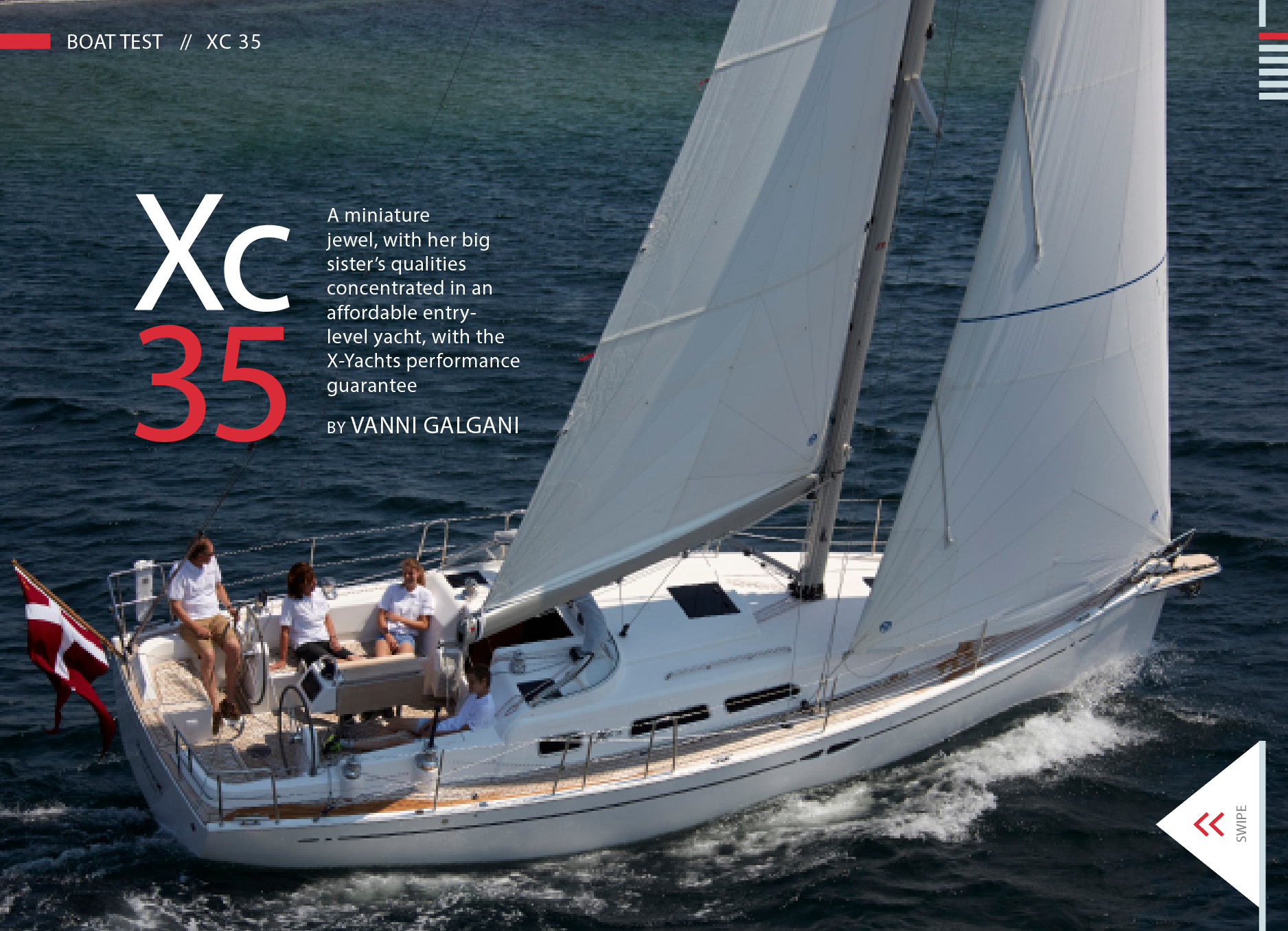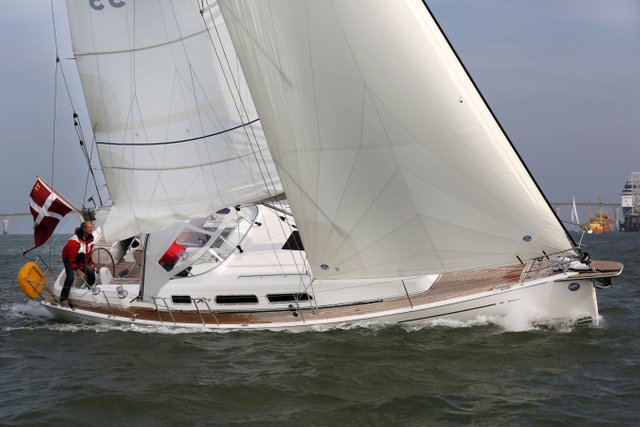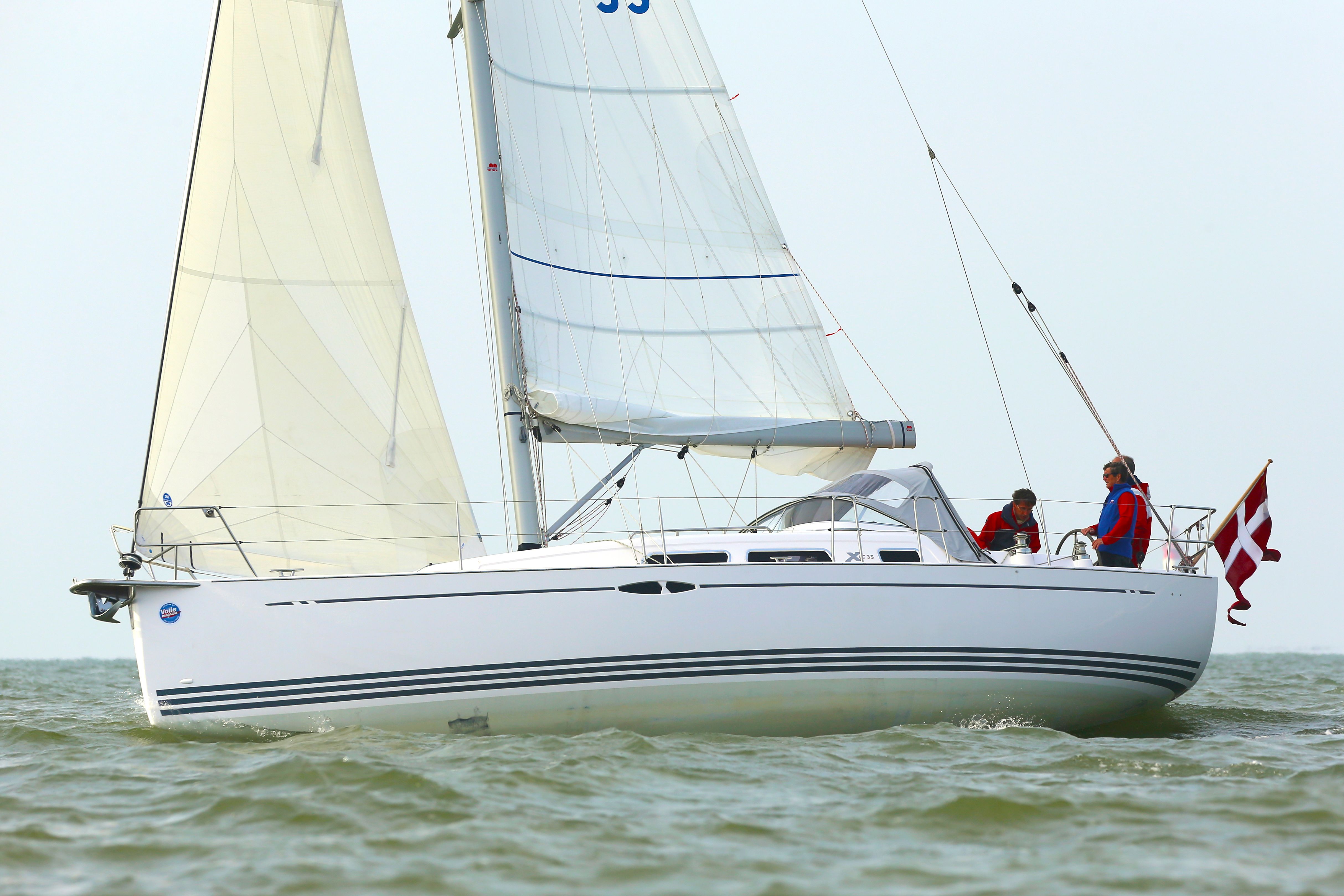
A miniature jewel, with her big sister's qualities concentrated in an affordable entry-level yacht, with the X-Yachts performance guarantee
by Vanni Galgani
It's been obvious for a long time - the X craft perform well under sail, almost always better than their rivals - and in some cases much, much better. Some years ago after countless victories in top races, the Danish yard decided to create a new cruiser line with no urge to race, complementing the Performance range in the even more sporty "Xp" version. But although the "c" line is intended for pure cruising, what we said above still applies - her behaviour at sea, a combination of performance parameters involving speed, safety and comfort, is still a priority. That’s why the people who conceived and designed the yacht, Niels Jeppesen and his team, remains unchanged. In general, this aspect - a precise, enduring vision - is one of the principles underpinning the success of the world's most famous yards. The new 35 entry-level yacht for the cruiser range is clear proof - despite its reduced dimensions (not reduced that much when experienced in reality), it is a real X. But there's more - while the X designs never disappoint where performance is concerned, over the years some models have featured a more successful interior layout than others. The new 35 is one of these. Despite its compact build, everything is well-proportioned and coherent, including the finishings and style, creating a true luxury cruiser in miniature.


design X-Yachts Design Group
yard X-Yachts
LOA 10.36 m
LWL 9.60 m
beam 3.52 m
draught 1.90 (1.60) m
displacement 6,450 kg
ballast 2.150 kg
sail area 73.15 sqm
engine Yanmar 30 hp
fuel reserve 165 l
water reserve 245 l
base price 161,500 euro (23,4 BTC)
DECK
The slogan of a famous tyre manufacturer says that "Power is nothing without control". The same applies to the main deck layout - the best yacht in the world is nothing if it cannot be sailed easily and safely. That's why on an X it's always the deck that shapes the interiors, when it's frequently the opposite on modern yachts. The ergonomics, the quantity and quality of the equipment, the organisation of the sheets - no weird solutions or sweeping innovations, just careful research and no penny-pinching. Proof of this can be seen in the six winches installed as standard and the German mainsheet system with recessed conduits beneath the side decks, which can be controlled directly from the helm station. Given its small size the helm station also controls the genoa winch, providing the opportunity to sail the boat single-handed without compromising on efficiency and power in manoeuvres. As we said, no weird and wonderful solutions - it's a classic layout but everything works as it should. What's more it's the same layout as on the 50, with the same level of finish and features, so this 35 can be described as one of the most luxurious 10-metre craft currently on offer anywhere. Starting aft, there is a central walkway and large swing-down swim platform that conceals the life raft compartment. Access is simplified by the dual helm - strangely, the wheels are set low, on floor level, a fault found on all the Xc yachts - and the absence of a traveller. The large fixed table (optional), complete with handrail and plotter space, also makes it easier to move around the yacht when heeling. The protection is supplied by the high coaming and windshield - optional but recommended - which can be extended by a sprayhood. There is a strikingly large storage locker below the starboard bench. It has a floor and contains various system elements with easy access, like heating and fuel and black water stores. On more recent examples it can also be accessed from the head. When leaving the cockpit, the side decks are rather narrow, inevitable given the size of the coachroof, but passage is assisted by the internal chainplates and the imposing raised toerail that also surrounds all the rails and gear, including the cleats. The bow clear of the coachroof is flat, creating a comfortable area for stretching out. The pulpit is robust and the bowsprit is functional, another optional feature that we enthusiastically recommend.
INTERIORS
Despite their limited dimensions, the interiors are well-designed and work correctly throughout, with no great sacrifices or compromises. The 314 cm-long saloon is well-proportioned and brightly lit by a central hatch and four large opening portlights in the coachroof, plus two windows in the sides of the revamped design, which is more modern and functional. There is a classic configuration, with several clever solutions, like the design of the sofas (202 cm long and 93 wide at the head) and the table (functional when folded, large when open), which mean the dinette can be made use of in any conditions. There is plenty of locker space, with wall units and bookshelves throughout the saloon. The nav station shows the yacht's intended purpose more than anything else - some yards claim it is useless, but try to sail around the world without having a special place to think through the navigation, and apart from the plotter in the cockpit, somewhere to concentrate all the rest of the electronics, especially the units for the various controls and communications. On this blue water cruiser there is a chart table, and a big one, too - a 90x64 cm work surface, with plenty of drawers in the pedestal and ample space, also at the front, for instruments. The only drawback is the lack of room for traditional charts. The galley also offers lots of spaces, with two large sinks, a well-insulated fridge, a variety of drawers and two rows of wall units. There is a refined Corian worktop in Camoan white. The owner's cabin lies forward - ample floor space (56.6x98.5 cm), large bed (204x186x59 cm) and excellent storage, with two large lockers, side shelves and low access to the under-bed space. The situation aft is a little more complicated - while there is limited floor space, to the benefit of the large, valuable locker, it is the bed that may leave guests puzzled. It could be quite large, with a maximum width of almost 180 cm, but the engine compartment eats up a fair part of this, to a width of 66 cm. As result, at the head of the bed its 195 cm length can only be exploited to a width of 120 cm. The head is well-organised, although the oilskin locker has no floor, draining into the bilges and sea-cocks. The head is good, 190 cm almost throughout the yacht, and the finishings are of a high quality, with horizontally-grained wood alternating with white surfaces, in a linear style that combines modern shapes with marine solutions.
The most important difference between the P and C lines lies in the naval architecture, especially the hull shape. The C models are visibly more suited to comfort and long voyages. The canoe body creates a noticeable wedge-shape forward and larger wetted surfaces, ensuring not only greater interior liveability but also a gentler, more comfortable behaviour at sea, with a significant ability to sail in rough seas without sudden, violent movement. If we add a medium-heavy displacement and concentration of almost all the weight, including water tanks, below the floor, then we have the perfect recipe for a bluewater worthy of the description. But don't be taken in - under sail it's still an X, which means this yacht is fast, responsive and fun at the wheel. In comparison with the other models in the C line we also found that the 35 is especially well-balanced and difficult to provoke into luffing. It sails well with the jib, too, but the interior chainplates and consequent long travellers mean it is possible to mount an overlapping genoa, which will please anyone wanting to cross the oceans sailing downwind. It has a good turn of speed, easily exceeding 7.5 knots, with a tendency to maintain high averages. The high righting moment and outstanding balance of the hull when heeling means it's possible to sail even when carrying too much sail without losing control, giving the crew the time it needs to reduce sail without stress. The helm position suffers a little from the low wheels if you are standing when upwind - in compensation all the sheets are within easy reach and feel well-protected. The rudder exerts the right pressure on the wheels, allowing the helmsman or woman to feel properly in touch with what is going on. There are some problems with the mainsheet system - the attachment on two fixed points on the coachroof doesn't allow the boom to be swung to the centre, and the circuit experiences significant friction, so much so that in gentle winds you will find it hard to sheet out. All in all it's a perfect example of luxury downsizing - if you usually sail two-handed and are tired of handling demanding yachts, the Xc 35 will provide great satisfaction, offering exceptional performance in style and comfort. It is, in fact, one of the best compact bluewaters on the market.
That is a sweet boat.
Downvoting a post can decrease pending rewards and make it less visible. Common reasons:
Submit
it should be perfect for me, even if the interior layout seems old style. What about material's quality?
Downvoting a post can decrease pending rewards and make it less visible. Common reasons:
Submit